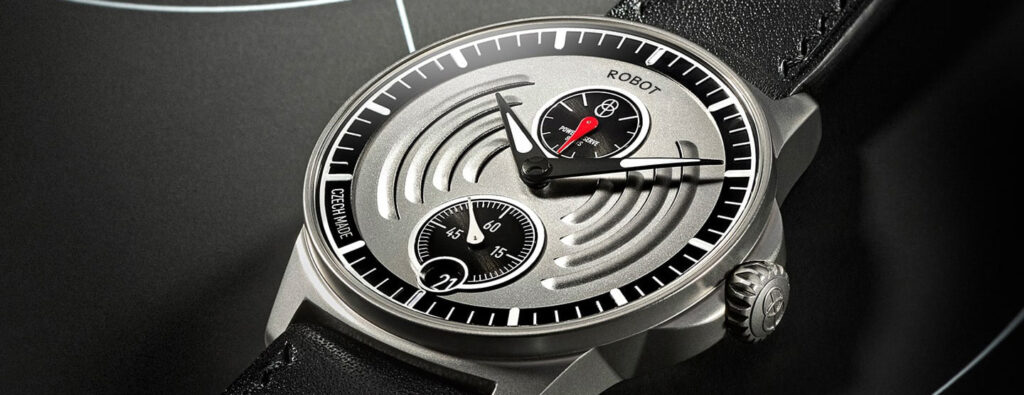Uncategorised
The Breguet Classique Tourbillon Extra-Thin Automatic 5377
Uncategorised
The Breguet Classique Tourbillon Extra-Thin Automatic 5377
Breguet has introduced what is currently –as far as we have been able to determine –the world’s thinnest self-winding tourbillon. The Classique Tourbillon Extra Thin Automatic Ref. 5377 is overall only 7mm thick –and the movement, Breguet calibre 581DR, is a mere 3mm thin.
In 1801, Abraham Breguet received a patent for an invention he’d conceived of and created during his exile in Switzerland from the excesses of the Committee For Public Safety. That invention, as everyone who knows watches knows, was a regulating device known as the tourbillon –Breguet’s patent mentions that he intended the device to both mitigate the effects of positional variations in rate in the vertical positions (by rotating the escapement, balance, and spring, which creates a single average rate for all the vertical, or hanging, positions) as well as aid in the distribution of oil –a not inconsiderable problem, given the fact that watch oils at the time were vegetable or animal oils which performed very poorly relative to modern watch oils.
The oiling issue hasn’t been a current one for some time thanks to modern synthetic watch oils, and the problem of positional variation in rate has become technically much more complex thanks to the advent of the wristwatch (another field in which Breguet was a pioneer –the timepiece ordered by Caroline Murat, the Queen of Naples, in 1810 was one of the earliest known watches specifically designed to be worn on the wrist.) Technical solutions specifically designed for the wristwatch have since evolved to include multi-axis tourbillons, but refinement of Breguet’s original concept has evolved in another direction as well: the creation of extra flat tourbillon wristwatches.
The term “extra flat” and “ultra thin” are not specifically defined; the industry standard reference –the Berner dictionary of horology –merely says, with a straight face, that an extra thin watch is, “. . . one which is very thin.” In the case of tourbillons we can perhaps be more specific –the simplest tourbillon watch currently offered by Breguet is the hand-wound reference 5357, housing the tourbillon calibre 558.1; cased, the watch is 10.10 mm thick, at 39mm in diameter –it’s also water resistant to 30 meters.
The all-time record for flatness in a tourbillon wristwatch was set some time ago, by Audemars Piguet. In 1986 AP came out with an extremely unusual tourbillon wristwatch: the calibre 2870, whose extreme thinness was achieved by actually using the back of the watch case as the top plate of the movement. If you view the watch from behind, you can actually see the jewels for the upper pinions of the going train embedded in the case-back. The watch used a massive platinum-iridium winding hammer, swinging through a fairly short arc, to wind the watch –the movement height was 2.5mm and the overall cased thickness of the watch, only 5mm. This probably represents, if not an absolute limit on the thickness of a self-winding tourbillon, at least something close to the theoretical limit, and it was achieved at the cost of optimum efficiency in the winding system and robustness of the going train, but it was an astonishing technical accomplishment that has never been bettered in terms of dimensions.
This year, however, Montres Breguet debuted what is, as far as we have been able to determine, what will be the world’s thinnest self-winding tourbillon when it reaches retailers in 2014. This watch is the Breguet Classique Tourbillon Extra Thin Automatic Ref. 5377.
Extreme thinness in a self-winding watch is always a challenge as for the automatic winding system to work, the oscillating weight has to have a certain amount of inertia, and as well as significant a mechanical advantage as well as it has to defeat the tension in the mainspring in order to wind it fully. Most self-winding watches use a full movement diameter rotor, which provides the best mechanical advantage as well as allowing for maximization of mass at the periphery of the rotor. However, there are limits on the maximum thinness that can be achieved with this system, and it’s perhaps significant that the world record for the thinnest self-winding movement with a full diameter rotor has not changed since 1967, when Jaeger LeCoultre introduced its calibre 920 –a movement used by Audemars Piguet as the calibre 2120, by Vacheron Constantin as the calibre 1120, and by Patek Philippe as the calibre 28-255, the movement is 2.45mm thick. (NB –while cal. 920 was and in its variants remains the thinnest full rotor self-winding movement in wide general use, the Lasalle calibre 2000 was even flatter –at 2.08mm –albeit with very compromised mechanical integrity and it was ultimately not successful commercially.)
Thin self-winding tourbillons by firms such as Piaget and Patek Philippe have relied in recent years on micro-rotor winding systems, which shave off extra millimeters by integrating the winding rotor directly into the plate. There is a loss of mechanical advantage, and the micro-rotor takes up additional space in the movement, placing constraints on movement architecture, mainspring barrel size and configuration, and so on, but such watches are historically proven, work well, and among them are some of the most beautifully designed and finished self-winding tourbillons ever made.
The Breguet Classique Tourbillon Extra Thin Automatic uses a different, and much more unusual, solution to achieving a very thin self-winding tourbillon: a peripheral rotor system, in which the oscillating mass is on the same plane as the movement plate, rotating around the circumference of the movement, with gear teeth on its inner diameter that engage the wheels of the automatic winding train. Like the micro-rotor, this system is inherently mechanically disadvantaged when compared to a conventional automatic winding system, and for this reason they’re very rare, as it usually requires innovations in mounting the rotor and in arranging the automatic winding system in order for them to work. The only other peripheral winding system movement in current production that we’re aware of is Carl F. Bucherer’s CFB A1000 family of movements, which use a system of rocker-mounted DLC coated rollers to support the oscillating weight, and we are not aware of any self-winding tourbillon other than the Breguet Ref. 5377 that uses the system.
In fact, we’re unaware of any other self-winding tourbillon that has ever used the system; it’s always perilous to announce firsts in watchmaking and Breguet has avoided doing so with the Ref. 5377, but we think there’s good reason to assume the watch is not only a world’s record holder for flatness in an automatic tourbillon, but also a world’s first in using a peripheral winding system in a tourbillon.
The movement finish is unusually lyrical for a Breguet, using an elaborate vocabulary of stylized, almost floral engraving to decorate the movement bridges and mainspring barrels. The platinum peripheral rotor appears to be mounted on a system of ball bearing rollers –three rollers, evenly spaced around the edge of the movement plate, are visible through the display back –and the movement runs in 42 jewels (we assume that the high jewel count is at least in part due to extensive jeweling of the pivots of the automatic winding system.) The tourbillon cage appears to be driven from its periphery –a design feature which would offer savings in height –and, somewhat surprisingly for an extra flat tourbillon, it is not a flying tourbillon; there is a very elegantly minimalist upper tourbillon bridge, set flush with the surface of the trademark guilloché Breguet dial. The tourbillon is, other than the gearing, very traditional in layout, with the balance co-axial with the center of rotation of the tourbillon cage, and with the lateral lever system typical of the most traditional style of tourbillon construction.
The mainspring barrel provides a 90 hour power reserve, which is a major accomplishment in such a thin watch –especially considering the space that must be allotted for the automatic winding system, and that the watch has a (for a tourbillon) relatively high frequency of 4 hertz. The 16 ligne movement uses silicon for the lever and balance spring, and anti-magnetic steel for the other escapement components; it is adjusted in six positions.
It’s a remarkable watch –the automatic winding system leaves the movement so unobscured that when we first looked at it we thought we had been given a hand-wound tourbillon by mistake. It’s a most original conception and design from the company whose founder made the world’s first tourbillon over two centuries ago, and a clear indication that innovation in tourbillon design is still very much a current game in fine watchmaking.
Case: 18k rose gold, fluted “coin-edge” caseband; 42mm diameter. Water resistant to 3 bar. Dial in 18k silvered gold, engine turned with four different patterns; individually numbered and signed. Movement: self-winding tourbillon calibre 581DR, 16 lignes in 42 jewels. 90 hour power reserve.
$149,000 Rose Gold
$163,800 Platinum
Images by Jack Forster for Revolution Online; thanks to Breguet North America, as well as the New York 5th Ave. Breguet Boutique staff, for their hospitality and for the opportunity to photograph a full production model of this unusual and very interesting tourbillon.















